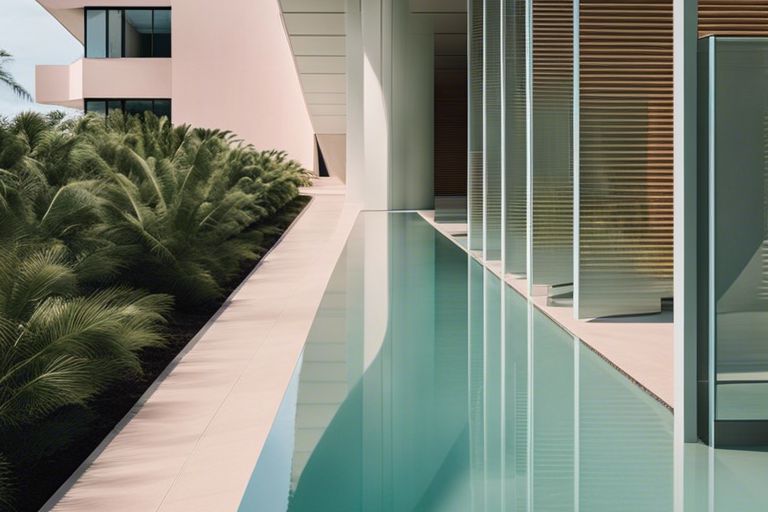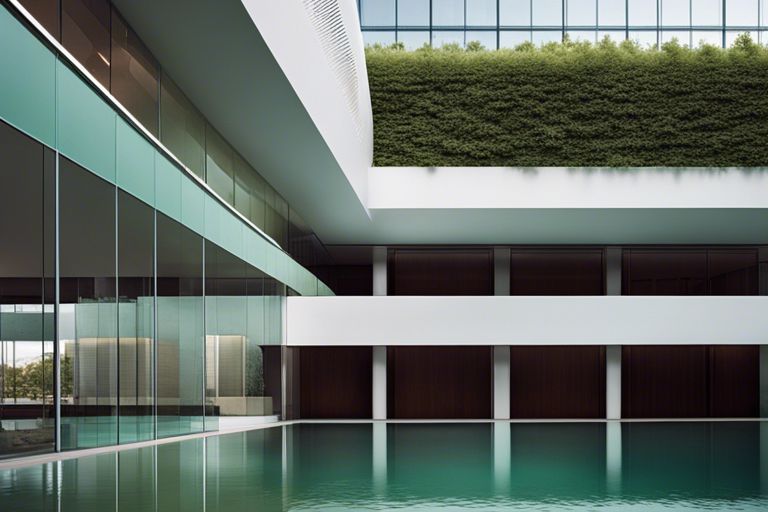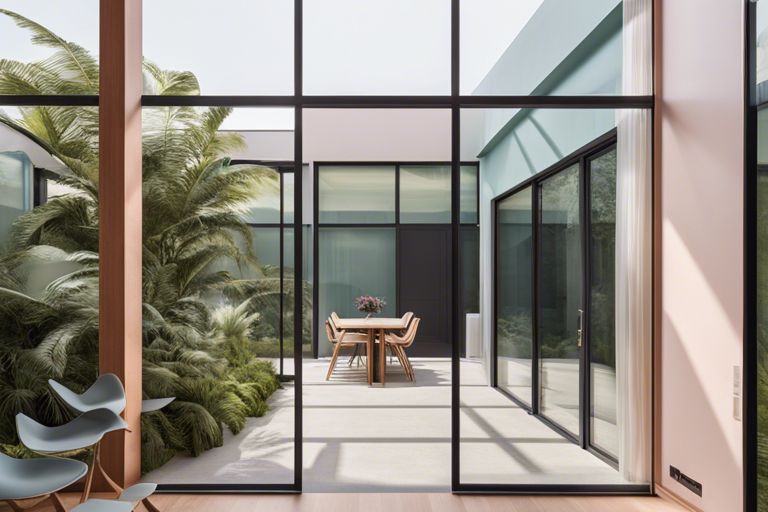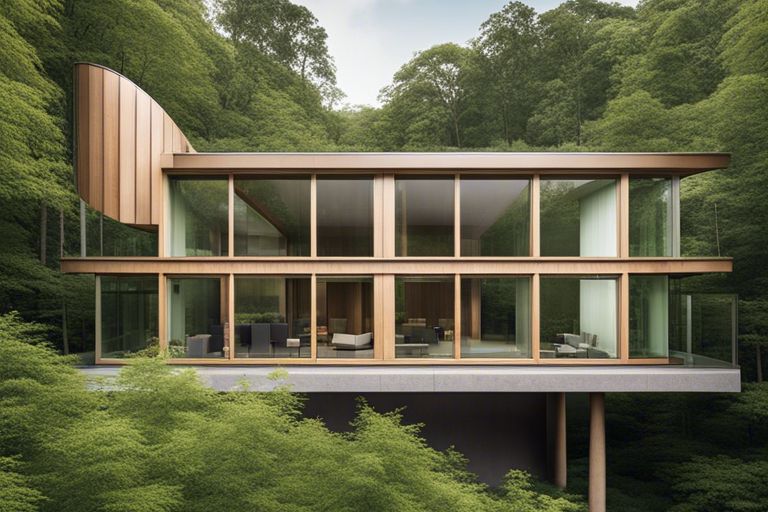Over time, you have realized that there is a profound beauty in harmonizing with nature, in bringing the rhythms of the natural world into your living spaces. In biophilic design, you have the opportunity to bridge the gap between architecture and the environment, creating spaces that not only look stunning but also connect you to the earth in a deep and meaningful way. Let’s explore how the principles of biophilic design can transform your surroundings into a symphony of nature and design.
Key Takeaways:
- Biophilic design: Embraces the innate connection between humans and nature, incorporating natural elements into architectural spaces to enhance well-being and productivity.
- Rhythmic design: Utilizes patterns and sequences inspired by nature to create a sense of flow and harmony within a space, promoting a calming and balanced environment.
- Harmonizing with nature: By integrating biophilic and rhythmic design principles, architects can create spaces that not only look beautiful but also resonate with the natural world, fostering a deeper connection with our surroundings.
The Symphony of Nature
The Rhythms of the Natural World
For a moment, close your eyes and listen to the symphony of nature around you. The gentle rustle of leaves in the wind, the rhythmic sound of waves crashing on the shore, the melodic chirping of birds in the distance. These are the rhythms that have been playing since the dawn of time, a harmonious orchestra conducted by Mother Earth herself.
As you open your eyes, you realize that these natural rhythms can be translated into design elements that not only please the eye but also soothe the soul. By incorporating these natural patterns, textures, and colors into your living and working spaces, you can create a sanctuary that resonates with the peaceful cadence of the natural world.
The Importance of Biophilia in Design
To truly understand the essence of biophilic design, you must recognize its significance in your daily life. Natural elements such as sunlight streaming through a window, plants breathing life into a room, and natural materials like wood and stone connecting you to the Earth, all play a crucial role in your well-being. When you immerse yourself in a space that embraces biophilic principles, you are vitally inviting nature to dance alongside you in perfect harmony.
Importance: Studies have shown that incorporating biophilic elements into design can have a profound impact on your physical and mental health. By bringing the outdoors inside, you create a space that not only looks beautiful but also promotes healing, reduces stress, and increases productivity. It’s a symbiotic relationship between you and nature, where both parties benefit from the harmonious connection.
The Principles of Harmonization
One of the foundational concepts in biophilic design is the idea of harmonizing with nature. According to Biophilia and Biophilic Design: 10 Tips and 4 Inspiring …, this approach involves creating spaces that reflect the natural world, bringing the outdoors in and connecting you with the rhythms of nature. To achieve true harmony in design, there are several key principles to keep in mind.
Balance and Proportion in Design
To create a harmonious space, it is important to consider balance and proportion in your design. Balance brings stability and a sense of equilibrium, while proportion ensures that elements relate to each other in a pleasing way. By carefully considering the scale of different components and their relationship to one another, you can create a space that feels inherently comfortable and inviting.
The Role of Light and Shadow
An important aspect of harmonizing with nature is understanding the role of light and shadow in design. Light and shadow play a crucial part in creating depth, texture, and visual interest in a space. Light can highlight certain features and create a sense of warmth and vitality, while shadow adds depth and mystery, enhancing the overall atmosphere of the environment.
Another
Embracing the Imperfections of Nature
Principles
Embracing the imperfections of nature is a key component of biophilic design. By incorporating elements such as natural textures, irregular shapes, and organic materials, you can bring a sense of authenticity and character to your space. These imperfections add a unique charm and richness that mimic the beauty found in the natural world, creating a space that feels alive and dynamic.
The Language of Materials
Natural Materials and Their Characteristics
Your journey into biophilic design begins by understanding the language of materials. Natural materials such as wood, stone, bamboo, and clay have unique characteristics that evoke a sense of warmth, tranquility, and connection to the outdoors. Wood brings a touch of natural elegance with its grain patterns and earthy hues, while stone exudes durability and timelessness. Bamboo symbolizes resilience and flexibility, while clay provides a sense of grounding and authenticity. By incorporating these natural materials into your design, you can create spaces that resonate with the beauty and harmony of the natural world.
The Use of Sustainable Materials in Design
Materials play a crucial role in sustainable design practices. Sustainable materials are not only environmentally friendly but also contribute to the well-being of both the inhabitants and the planet. By opting for recycled, reclaimed, or renewable materials, you can minimize your carbon footprint and support the conservation of natural resources. Sustainable materials such as reclaimed wood, recycled steel, cork, and organic textiles not only add a unique character to your space but also promote a healthier and more eco-conscious lifestyle.
Creating Texture and Pattern Inspired by Nature
Inspired by the intricate textures and patterns found in nature, you can infuse your design with a sense of organic rhythm and visual interest. Textured finishes like rough-cut stone, weathered wood, or woven textiles add depth and dimension to your space, inviting touch and exploration. Incorporating natural patterns such as leaf motifs, floral prints, or geometric shapes inspired by the natural world can create a harmonious and visually appealing environment.
The Dance of Form and Function
Organic Forms and Their Influence on Design
Keep in mind that in biophilic design, the form should follow the natural patterns found in the environment around you. Drawing inspiration from organic shapes such as flowing water, curves of leaves, or the geometry of a spider web can help create a harmonious and visually pleasing space. By incorporating these natural forms into your design, you can evoke a sense of calm and tranquility, as well as a connection to the outdoors.
The Interplay Between Structure and Nature
The relationship between the structure of a building and the natural world outside is a key consideration in biophilic design. Interplaying elements such as light, air, and vegetation with the built environment can create a seamless blend between indoors and outdoors. By strategically positioning windows, incorporating green roofs, or using sustainable materials, you can enhance this harmonious relationship and promote a sense of well-being.
Interplay between the architectural structure and the surrounding environment goes beyond mere visual aesthetics. It also influences factors such as air quality, natural light levels, and overall occupant health and productivity. By carefully considering how the building interacts with nature, you can create a space that not only looks beautiful but also functions in harmony with its surroundings.
Blurring the Lines Between Indoors and Outdoors
Between the four walls of a building lies an opportunity to create a seamless transition between indoor comfort and the beauty of the natural world outside. Incorporating elements such as indoor gardens, atriums, or large windows that offer views of nature can help blur the boundaries between inside and outside. This integration of nature into the built environment can provide numerous benefits, including improved air quality, reduced stress levels, and increased overall well-being.
Influence of natural elements in indoor spaces can evoke a sense of connection to the outdoors and create a calming atmosphere. By integrating biophilic design principles, you can not only enhance the visual appeal of your space but also promote a sense of balance and harmony that resonates with nature.
The Pulse of Water
Unlike anything else, water has a mesmerizing effect that can bring tranquility and life to any space. In biophilic design, the inclusion of water elements can profoundly impact your environment, fostering a deeper connection with nature.
The Significance of Water in Biophilic Design
Water is vital for all life on Earth, and its presence in your design can evoke feelings of calmness and serenity. Whether it’s a small trickling fountain or a reflective pool, the sight and sound of water can create a soothing atmosphere, reducing stress and promoting overall well-being. Incorporating water into your space can also enhance the visual appeal of your design, adding a touch of elegance and sophistication.
Incorporating Water Features in Design
To fully embrace the benefits of water in biophilic design, consider integrating water features strategically throughout your space. Fountains, ponds, or even indoor water walls can infuse a sense of tranquility and harmony, transforming your environment into a peaceful oasis. These features not only add aesthetic value but also serve as focal points that draw the eye and create a sense of balance within your design.
With careful planning and attention to detail, you can seamlessly blend water elements into your architecture, enhancing the overall ambiance of your space. Whether you choose a naturalistic waterfall or a modern reflecting pool, the incorporation of water features can elevate your design to new heights, creating a harmonious relationship between indoor and outdoor spaces.
The Soothing Effects of Water in Architecture
Biophilic design principles emphasize the importance of incorporating natural elements like water to improve the overall well-being of occupants. Water features in architecture can act as natural humidifiers, enhancing indoor air quality and creating a more comfortable environment. Additionally, the rhythmic sounds of flowing water can mask unwanted noise, promoting a sense of peace and relaxation.
Plus, the reflective properties of water can introduce an element of light and movement into your design, adding depth and dimension to your space. When integrated thoughtfully, water features can become transformative elements that elevate your architecture and foster a deeper connection with the natural world.

The Rhythm of Color
The Palette of Nature and Its Influence on Design
All around you, nature uses a remarkable array of colors to create scenes of breathtaking beauty. From the lush green of the forests to the vibrant hues of blooming flowers, the natural world offers a boundless palette of inspiration for design. Incorporating these natural colors into your living space can help bring a sense of tranquility and connection to the outdoors.
Using Color to Create Harmony with Nature
Nature has a way of effortlessly combining colors to create visually stunning landscapes. By taking cues from nature’s color schemes and incorporating them into your design, you can create a harmonious environment that promotes well-being and serenity. Whether it’s the calming blues of a tranquil lake or the earthy tones of a sandy beach, introducing these colors into your space can help establish a connection with the natural world.
Rhythm: When using color to harmonize with nature, consider not only individual colors but also how they interact with each other. Just as in nature, the right combination of colors can create a sense of balance and flow in your design.
The Emotional Impact of Color in Biophilic Design
Impact: Colors have a profound influence on our emotions and well-being. By incorporating shades that mimic those found in nature, you can evoke feelings of calm, joy, or even rejuvenation in your living space. Choosing the right colors can help create a space that nurtures and uplifts your spirit.
A harmonious blend of colors inspired by nature can transform your home into a sanctuary where you feel connected to the natural world, promoting a sense of peace and harmony in your daily life.
To wrap up
Following this exploration of harmonizing with nature and creating rhythms in biophilic design, you are invited to reflect on the power of integrating natural elements into your living spaces. Just as Frank Lloyd Wright believed, the connection between design and nature is not just aesthetic, but important for our well-being. By incorporating biophilic elements into your surroundings, you are not only enhancing the beauty of your space but also nurturing a sense of tranquility, connectedness, and harmony.
As you commence on your journey to embrace biophilic design principles, remember to look to nature for inspiration. Let the rhythms of the natural world guide you in creating spaces that uplift your spirit and nourish your soul. By weaving nature into your design ethos, you are not only creating beautiful environments, but also fostering a deeper connection to the world around you. Embrace the wisdom of nature, and let its rhythms flow through every aspect of your design.
FAQ
Q: What is Biophilic Design?
A: Biophilic design is an innovative approach that seeks to incorporate natural elements and processes into the design of our built environments, fostering a deep connection with nature.
Q: How can Biophilic Design create rhythms in architecture?
A: By integrating natural elements such as plants, water features, natural light, and organic shapes into design, Biophilic Design creates a harmonious rhythm that mimics the patterns and cycles found in nature.
Q: What are the benefits of harmonizing with nature in design?
A: Harmonizing with nature in design not only enhances the aesthetic appeal of spaces but also improves mental well-being, increases productivity, reduces stress, and promotes overall health and happiness for occupants.


